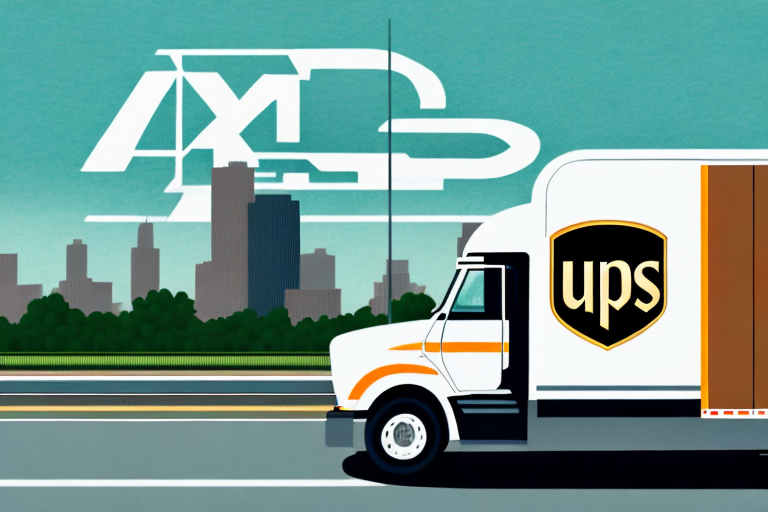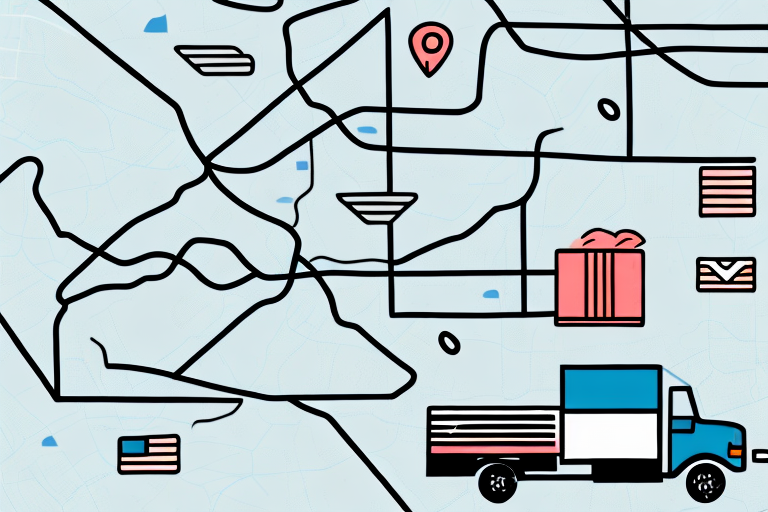Understanding UPS Shipping Rates in the United States
When it comes to shipping within the United States, UPS is one of the most popular options for businesses and individuals alike. However, understanding UPS shipping rates can be a complex process, with various factors influencing the final cost of your shipment. In this article, we will explore the key factors that affect UPS shipping rates, how to calculate these rates, and ways that you can save money on your shipping costs. Additionally, we will discuss the different types of UPS shipping services available in the US, various packaging options, and how to track your shipment in real-time.
Factors that Affect UPS Shipping Rates
Several key factors can impact the final cost of your UPS shipment. These include the weight and dimensions of your package, the distance it is traveling, the type of service you choose, and any additional options or services you select, such as expedited delivery or signature confirmation.
The weight and dimensions of your package are among the most significant factors in determining your UPS shipping rate. Generally, the heavier and larger your package is, the more you can expect to pay for shipping. For example, UPS implements dimensional weight pricing for certain packages, which considers both size and weight. According to UPS's [dimensional weight guide](https://www.ups.com/us/en/help-center/technology-support/dimensional-weight.page), this method ensures that larger, lighter packages are priced fairly based on the space they occupy during transport.
The distance your package travels also affects the cost, with longer distances generally resulting in higher shipping rates. UPS divides the U.S. into various shipping zones, and the rate increases as the zone number increases. For instance, shipping from New York to California (Zone 8) will typically cost more than shipping within the Midwest (Zone 4). Understanding these zones can help you estimate costs more accurately.
The type of service you select plays a major role in your UPS shipping rate. UPS offers a variety of services, including Ground, 2nd Day Air, Express Saver, and Next Day Air, each with different delivery speeds and pricing structures. For example, UPS Worldwide Express provides expedited international shipping at a higher cost compared to standard Ground services.
Additionally, selecting additional services such as signature confirmation, insurance, or Saturday delivery can increase your shipping costs. These options provide added security and convenience but come at an extra fee. It's essential to balance these add-ons with your budget and the importance of the shipment.
The time of year can also influence UPS shipping rates. During peak seasons like the holidays, December, or major sale periods like Black Friday, shipping rates may increase due to higher demand and limited capacity. Planning your shipments in advance during these times can help mitigate unexpected cost increases.
Lastly, the destination of your package can impact the shipping rate. Shipping to remote or rural areas may result in higher rates due to the additional transportation costs involved. It's crucial to check with UPS for any specific surcharges or fees associated with certain locations to avoid surprises.
How to Calculate UPS Shipping Rates
Calculating your UPS shipping rate involves considering several factors, including the weight and dimensions of your package, the destination, and the type of service you require. The most efficient way to calculate your shipping costs is by using the UPS online shipping calculator, which allows you to enter your package details and receive an instant estimate of your shipping costs.
Alternatively, you can calculate your shipping rate manually using the UPS rate guide or by speaking with a UPS representative. The rate guide provides a comprehensive breakdown of shipping rates for all UPS services, including Ground, Air, and International shipping. To use the rate guide, you need to identify the shipping zone for your destination and consider the weight and dimensions of your package. Once you have this information, you can locate the corresponding rate in the guide to estimate the cost of your shipment.
It's important to note that UPS shipping rates can vary based on the time of year and the volume of packages being shipped. During peak shipping seasons, such as the holiday season, rates may be higher due to increased demand. Additionally, if you are shipping a large volume of packages, you may be eligible for discounted rates through UPS's volume shipping program, which can provide significant savings for businesses with high shipping needs.
Another consideration when calculating your UPS shipping rate is the type of packaging you use. UPS offers a variety of packaging options, including boxes, envelopes, and tubes. The choice of packaging can affect your shipping costs; for example, using non-standard boxes or envelopes may incur additional fees for dimensional weight. To optimize costs, it's recommended to use UPS-provided packaging when possible or choose standard sizes that minimize additional charges.
Types of UPS Shipping Services Available in the US
UPS offers a range of shipping services to meet the varying needs of businesses and individuals. These services include:
- UPS Ground: A cost-effective shipping option for non-urgent, larger packages within the continental US. It typically delivers within 1-5 business days, depending on the distance.
- UPS Air: A faster shipping option for both domestic and international shipments that need to be delivered within a specific timeframe. Services include Next Day Air, 2nd Day Air, and 3 Day Select.
- UPS International: A comprehensive shipping service that allows you to send packages overseas with options like Worldwide Express and Worldwide Saver.
- UPS Expedited: A faster shipping option for time-sensitive packages that need to reach their destination quickly, often available for both domestic and international shipments.
Aside from the standard shipping services, UPS also offers additional services to cater to specific needs. One of these is the UPS My Choice service, which provides customers with more control over their deliveries. With this service, customers can reroute packages to a different address, reschedule deliveries to a more convenient time, or even provide delivery instructions to ensure successful receipt.
Another valuable service offered by UPS is the UPS Access Point network. This service allows customers to have their packages delivered to a nearby UPS Access Point location instead of their home or office. This is particularly useful for individuals who are not always available to receive packages at their address, providing flexibility and convenience in package pickup.
Exploring Different UPS Packaging Options
Choosing the right packaging is crucial not only for protecting your items during transit but also for optimizing shipping costs. UPS offers a variety of packaging options, including boxes, envelopes, and tubes, as well as custom packaging solutions for larger or specialty items. Selecting the appropriate packaging can help reduce the dimensional weight of your shipment and potentially lower your shipping costs.
When selecting packaging for your UPS shipment, consider the weight and fragility of your items. For heavier items, it's recommended to use a sturdy box with reinforced corners and edges to prevent damage. For fragile items, UPS offers specialized packaging options such as foam inserts and cushioning materials to ensure safe delivery. Using proper packaging not only protects your items but also minimizes the risk of incurring additional fees for damaged packages.
Environmental impact is another important factor to consider when choosing UPS packaging. UPS provides eco-friendly packaging options made from recycled materials and designed to minimize waste. By selecting sustainable packaging, you can reduce your carbon footprint and contribute to a more sustainable future. Additionally, using reusable packaging options can offer long-term cost savings and environmental benefits.
Understanding UPS Delivery Time and Transit Time
It's important to understand the difference between delivery time and transit time when it comes to UPS shipping. Transit time refers to the number of days it takes for your package to travel from its origin to its destination. In contrast, delivery time indicates the specific day your package will be delivered to the recipient.
UPS guarantees on-time delivery for many of its services, but several factors can impact delivery time. These include weather conditions, traffic disruptions, and other unforeseen circumstances that may delay transit. To minimize potential delays, it's advisable to choose a service that aligns with your delivery speed requirements and to track your shipment regularly using UPS's tracking tools.
Tips to Save Money on UPS Shipping Rates
Saving money on your UPS shipping rates doesn't have to be challenging. Here are several strategies to help you reduce your shipping costs:
- Ship During Off-Peak Times: Shipping during non-peak seasons can result in lower rates due to decreased demand.
- Use UPS's Packaging Options: Utilizing UPS-provided packaging can help reduce dimensional weight and avoid additional fees.
- Consolidate Multiple Shipments: Combining multiple packages destined for the same location can lower overall shipping costs through bulk pricing.
- Choose Slower Shipping Options: Opting for standard or ground services instead of expedited options can significantly reduce costs if your package is not time-sensitive.
- Utilize the UPS Online Shipping Calculator: Comparing rates using the UPS shipping calculator allows you to choose the most cost-effective service for your needs.
Understanding the Role of Distance in UPS Shipping Rates
Distance is a fundamental factor in determining UPS shipping rates. Generally, the farther your package needs to travel, the higher the shipping cost. This is because longer distances require more resources and time to deliver the package to its destination. UPS divides the United States into shipping zones, with each zone representing a specific distance range from the origin point. Shipping within closer zones typically costs less than shipping across multiple zones.
The shipping zone and the type of service selected can further influence the distance-based cost of your shipment. For example, shipping a package via UPS Ground within the same region will cost less compared to sending the same package internationally via UPS Worldwide Express. Understanding how distance and zones affect your shipping rates can help you make informed decisions to optimize your shipping costs.
How to Track Your UPS Shipment in Real-Time
UPS provides several tools to track your shipment in real-time, ensuring you stay informed about your package's journey from origin to destination. You can use the UPS website to track your shipment by entering your tracking number. This tool provides up-to-date information on your package’s location, transit status, and estimated delivery time.
Additionally, you can opt-in to receive email or text notifications that provide regular updates on your package's status. These notifications can alert you to any changes in transit, allowing you to proactively address any potential delays.
For businesses managing multiple shipments, UPS offers advanced tracking and shipping management tools through its UPS My Choice for Business platform. These tools help streamline the shipping process, manage shipments efficiently, and provide comprehensive tracking data to enhance visibility and control over your logistics.
Understanding UPS Insurance and Liability Coverage for Shipments
UPS offers insurance and liability coverage options to protect against loss or damage during transit. Standard liability coverage is included with most UPS services, providing coverage up to a certain limit based on the type of service selected. For example, UPS Ground includes limited liability coverage, while expedited and international services may offer higher coverage limits.
However, it's important to note that this coverage may not apply to all types of shipments or situations. Valuable or fragile items may require additional insurance to ensure full protection. UPS provides options to purchase additional insurance, also known as declared value coverage, which allows you to declare a higher value for your shipment in exchange for increased coverage.
Understanding the specifics of UPS's insurance policies is crucial to ensure that your shipment is adequately protected. Reviewing the terms and conditions of UPS's liability coverage and considering the value of your items can help you make informed decisions about additional insurance needs.
How to File a Claim for Damaged or Lost Shipments with UPS
If your shipment is lost or damaged during transit, you can file a claim with UPS to receive reimbursement for the value of your items. The process for filing a claim varies depending on the type of service used and the nature of the claim. Generally, you will need to provide the following documentation:
- Your shipment's tracking number
- A detailed description of the lost or damaged items
- Proof of the items' value, such as receipts or invoices
- Evidence of the damage, such as photographs
Once you have gathered the necessary documentation, you can submit your claim through the UPS website or by contacting a UPS representative. UPS will review your claim and provide a resolution, which may include reimbursement or repairs, depending on the circumstances.
Timely filing of claims is essential, as UPS has specific timeframes within which claims must be submitted. Familiarizing yourself with these deadlines and the required documentation can expedite the claims process and increase the likelihood of a favorable outcome.
The Pros and Cons of Using UPS for Shipping in the US
While UPS is a popular choice for shipping within the US, it's important to weigh the pros and cons to determine if it is the right option for your specific needs.
- Pros:
- Extensive Network: UPS has a vast network of services and locations, ensuring reliable coverage across the United States and internationally.
- Reliable Delivery Times: With various service options, UPS provides dependable delivery schedules that can meet different time-sensitive needs.
- Range of Packaging and Shipping Options: From standard boxes to specialized packaging, UPS offers diverse options to accommodate different shipment types.
- Advanced Tracking: UPS's tracking tools offer comprehensive visibility into the status of your shipments, enhancing logistics management.
- Cons:
- Higher Shipping Rates: Compared to some other carriers, UPS's shipping rates can be relatively high, especially for larger or heavier packages.
- Additional Fees: Optional services and non-standard packaging can lead to unexpected additional costs.
- Service Limitations: Certain remote areas may experience limited service availability or higher shipping costs.
Considering these factors, businesses and individuals should evaluate their specific shipping needs, budget constraints, and the value of additional services when deciding whether UPS is the most suitable carrier for their requirements.
Comparing UPS Shipping Rates with Other Domestic Carriers
When comparing UPS shipping rates with other domestic carriers, it's essential to consider a range of factors, including the carrier's network coverage, available shipping services, and pricing structure. Here are comparisons with some popular domestic carriers:
- FedEx: Known for its express shipping services and extensive overnight delivery options, FedEx often competes directly with UPS in terms of speed and reliability. However, prices can be comparable, with FedEx sometimes offering better rates for specific services or heavier packages.
- USPS: The United States Postal Service typically offers the most affordable rates for small and lightweight packages, especially for first-class mail and flat-rate boxes. However, USPS may not match UPS in terms of package tracking or delivery speed for larger shipments.
- DHL: While DHL is a major player in international shipping, its domestic services in the US are limited compared to UPS, making UPS a more versatile choice for both domestic and international needs.
To determine the best fit for your shipping needs, compare the rates and services of each carrier based on your typical package sizes, shipping volumes, and delivery timelines. Utilizing comparison tools or consulting with shipping experts can aid in making an informed decision that balances cost and service quality.
The Future of Shipping with UPS in the United States
As e-commerce and online shopping continue to grow, the demand for reliable and affordable shipping options is increasing. UPS is likely to remain one of the leading shipping providers in the US, leveraging its extensive network and diverse range of services to meet evolving consumer and business needs.
However, as sustainability becomes a priority for both companies and consumers, UPS and other carriers may be forced to innovate to meet these changing demands. UPS has already begun investing in sustainable practices, such as introducing electric vehicles into its delivery fleet and optimizing routes to reduce carbon emissions. Future developments may include further advancements in green logistics, the adoption of automation and robotics to enhance efficiency, and the expansion of same-day delivery services to cater to the instant gratification trend.
Additionally, technological advancements like blockchain for improved transparency and enhanced tracking, as well as artificial intelligence for optimizing logistics and predicting shipping trends, are likely to shape the future landscape of shipping with UPS. Staying abreast of these trends will be crucial for businesses and individuals aiming to leverage UPS's services effectively.
Conclusion
Understanding UPS shipping rates can be a complex process, with various factors influencing the final cost of your shipment. By considering factors such as weight, distance, service type, and packaging options, you can ensure that you get the best possible rate for your shipment. Additionally, by tracking your shipment, choosing additional insurance when necessary, and selecting a reliable carrier, you can help ensure that your package arrives safely and on time.








